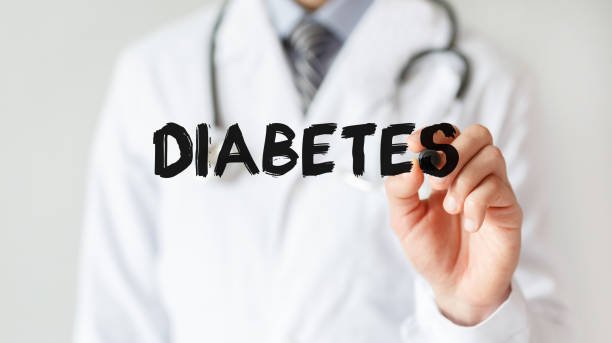Diabetes is a group of metabolic diseases characterized by elevated levels of glucose in the blood. Glucose is the form in which sugar is stored in the blood and it's necessary for energy.

Pathophysiology Of Diabetes

Insulin is a hormone secreted by the pancreas. When an individual eats a meal containing carbohydrate, there is increased insulin secretion which helps glucose move from the blood to the muscles, liver and fat cells. The job of insulin in these sites is:
- i) To metabolize and transport glucose to release energy.
- ii) To stimulate storage of excess glucose in the liver and muscle as glycogen.
- iii) To signal the liver to stop releasing glucose.
- iv) To help in the storage of dietary fat as adipose tissues.
- v) To accelerate transport of amino acid from protein into cells.
- vi) To inhibit breakdown of stored glucose, protein and fat.
While fasting, in between meals and overnight, the pancreas releases basal insulin constantly in small amounts. Also with reduced blood glucose level, the pancreas will release a hormone called glucagon which will stimulate the liver to release stored glucose in order to maintain a constant level of glucose in the blood. The breakdown of glycogen in the liver after 8- 12 hours without food leads to production of glucose from non-carbohydrate sources like amino-acids and fat. This is called gluconeogenesis.
When there is insufficient insulin or impaired insulin secretion from the pancreas and there is reduced absorption of glucose in the gastro-intestinal tract making the glucose unavailable to the cells, hence resulting in elevated blood glucose level.
Classification of Diabetes
According to American Diabetes Association, it is classified into;
1 Type I Diabetes: This can also be called Insulin-Dependent Diabetes Mellitus or Juvenile-Onset Diabetes. It is an autoimmune disease in which the cells responsible for producing insulin are destroyed. It accounts for 5-10% of cases and mostly occurs in children and young adults. It can be as a result of genetic, immunological and possible environmental factors.
2 Type II Diabetes: This is also known as Non-Insulin Dependent Diabetes Mellitus or Adult-onset or Senile Diabetes. It occurs mostly in adults over the age of 40 years bit as a result of increased obesity and inactivity in young adults.
3 Secondary Diabetes: This is triggered by underlying conditions. For example; pregnancy can lead to gestational Diabetes, surgical removal of the pancreas or long term use of steroids.
4 Pre-diabetes: This is a condition in which there is constant decreased insulin or increased insulin resistance leading to a rise in blood glucose level, but not high enough to diagnosed as Diabetes. People at this stage may eventually develop Diabetes if preventive measures are not employed.
Signs & Symptoms
These include;

1 Hot dry flushed skin
2 Thirst

3 Fatigue
4 Sleepiness
5 Acetone odour to the breath (fruity smell)
6 Mental confusion
7 Hypotension - reduced blood pressure.
8 Coma and possibly death.
Reference
It sounds like a guide on how to get it.
Downvoting a post can decrease pending rewards and make it less visible. Common reasons:
Submit
That is definitely not the intention
I'm just educating people🙏
Downvoting a post can decrease pending rewards and make it less visible. Common reasons:
Submit